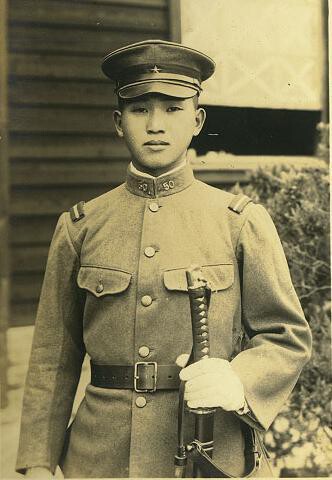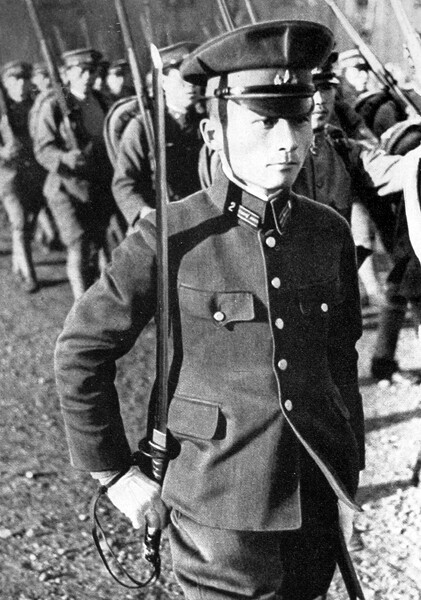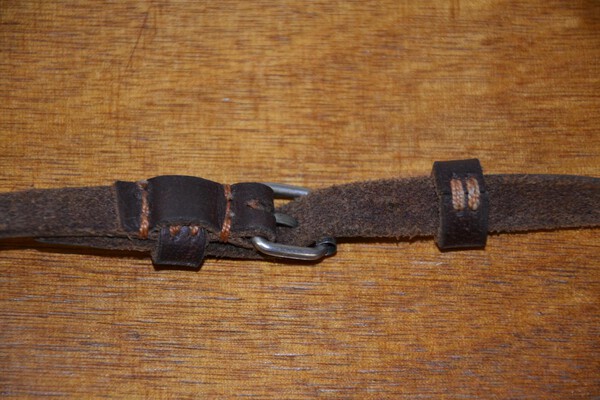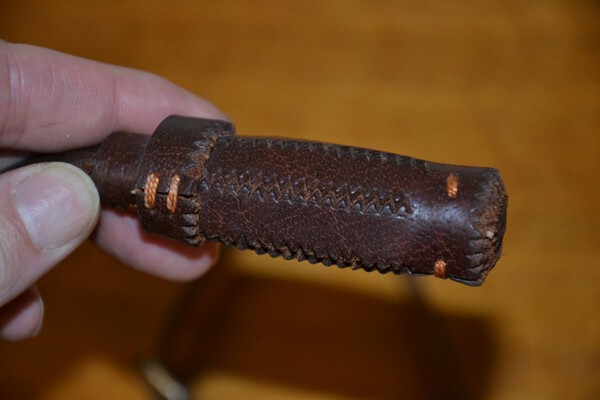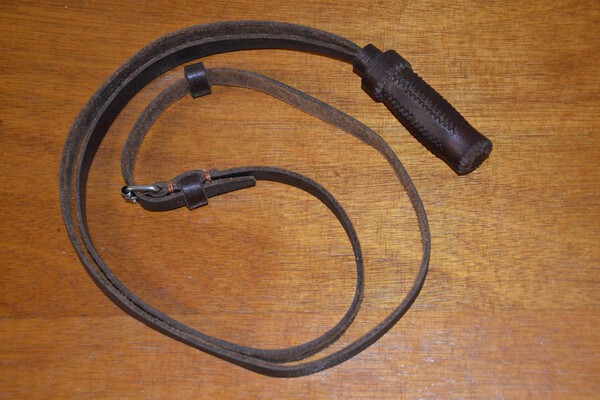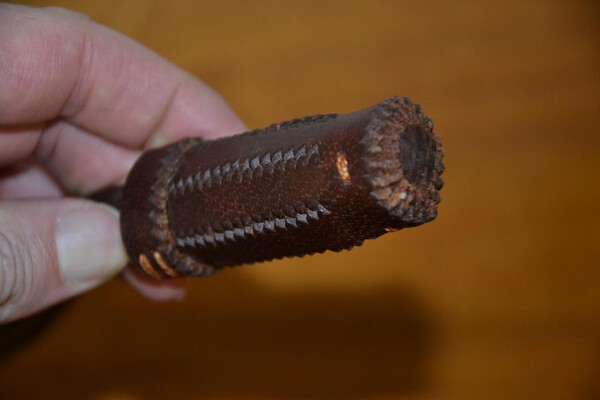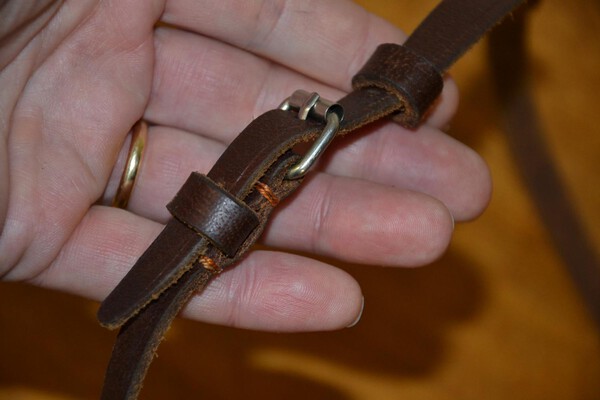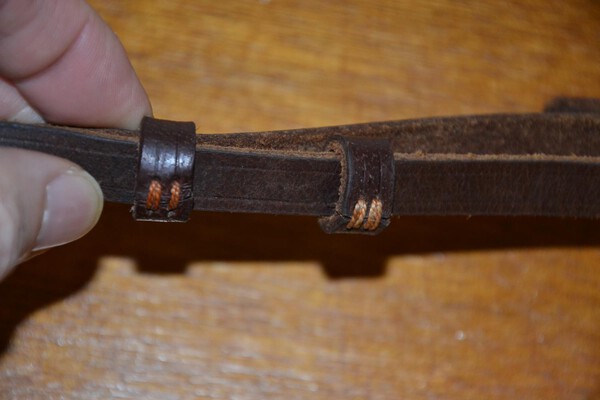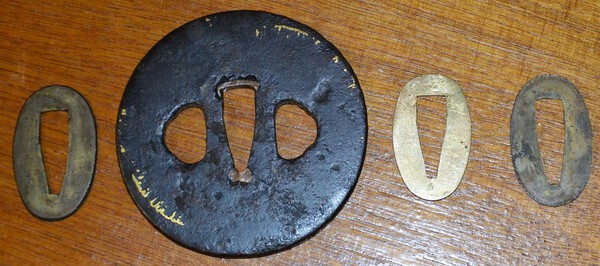-
Posts
241 -
Joined
-
Last visited
Content Type
Profiles
Forums
Events
Store
Downloads
Gallery
Everything posted by Yukihiro
-
Bruce, I think this might be the photo you were looking for. A second one, this time with what seems to be an iron tsuba.
-
Matt, Your Munechika is without a shadow of a doubt a great piece of history - thank you for posting! Regards, Didier
-
-
-
Chris, there are indeed three seppa in all, and I must say that I have suspected the shiny one to be a replacement or a later addition. I have taken for granted that the NCO tassel was a copy : it looks brand new.
-
Thank you very much, Ed. Of course, making sure that my sword is in its original configuration is of primary importance to me, because this will allow me to retrace at least part of its history - most nihonto lovers will tell you that "a blade speaks for itself", but, as far as gunto are concerned, I feel that every single element - not just the blade - has a story to tell.
-
Maybe an indication that the seppa which is closest to the habaki is the original one is the fact that the tarnish on both of them seems to be rather uniform. I cannot imagine that this isn't the original habaki, at any rate.
-
If that were indeed the case, where would the leather securing tab have been attached to the leather cover? From the way the blade fits into the scabbard (tight fit), the saya does seem to be original to the sword, and I don't see any reason why a seller would have associated it to this sword if he had wanted to make more money out of it, as this leather-covered scabbard is not particularly appealing to the eye.
-
Well, I am not sure there ever was a leather securing tab on this sword - the buttons would not have been level with the hole, to begin with, and I suspect the leather flap of the cover was cut, maybe, as was suggested to me, to get rid of information (name, unit) written on the inside of it. The remaining leather was glued to the saya to prevent it from leaving an ugly opening there. Here are some "fresh" pictures :
-
I see that both your tsuba AND your sarute are made of iron, so I may be right in assuming that matching them instead of having a brass sarute and an iron tsuba on the same sword might appeal to Japanese taste. I was beginning to wonder whether the sarute on my gunto had lost its former gilding.
-
Very interesting indeed! I suppose the "civilian" saya has merely been protected by a leather cover fitted with a hanger before going to war. Mine is a different case though, as the blade was definitely made in Seki.
-
Does anybody know whether gunto scabbards are interchangeable at all?
-
Thank you, Dave. Beautiful work : you really lend these "orphan blades" a second life! I have also studied the scabbard more closely : it also seems to be original to the sword - made to the exact dimensions of the blade and, more particularly, to those of the habaki, with no wobble whatsoever once the sword is inside.
-
Dave, I have just tried your test : no rattle at all, everything is tight as can be.
-
Yes, I suppose this was (and still is) common practice, but, if we exclude the tsuba and the blade (and maybe also the fuchi), the tsuka and its kabuto gane, together with the ito, the menuki and the same, can't have been put together after the war : the poor condition of the ito and the fact that it goes through the kabuto gane wouldn't have made that possible - the question I am asking is whether this set-up can possibly be dated to the beginning of the Second World War with any certainty. Regarding the possibility of a post-war put-together gunto, the J R YOUNG inscription on the saya leather cover would point to the contrary. Of course there is no telling whether the one element or the other is actually original to the blade, which is the reason why I am asking NMB members to tell me about the overall consistency of the sword as a whole. On another note, I have noticed that there is, aesthetically speaking, a parallel between the iron sarute of the (formerly) brown-painted kabuto gane and the equally brown fuchi over the iron tsuba, in the same way as brass sarute are often associated with the regular brass army tsuba.
-
What I would also like to know is whether the koshirae is consistent with a 1940-made blade : the kabuto gane is of a simpler model than the more usual one (no cherry blossoms and no leaves on the sides), but the same is made of rayskin and the menuki and fuchi seem pretty standard. Overall, I would say that the whole of this set-up doesn't look late war, but I am sure some of you on here have a clearer idea of the chronology of gunto koshirae. I imagine the choice of a simpler kabuto gane with an iron sarute and of the iron tsuba (if it is original to the sword) might have been dictated for the sake of economy, as, if I understood well, Japanese officers had to pay for their own swords.
-
Thank you for reply, Ken. I think I will live in ignorance until a similar tsuba turns up and I can link mine to it with some certainty : the last thing I want is to run the risk of ruining an old tsuba another collector might enjoy long after I have passed away just to satisfy my curiosity. I shall leave it as it is and keep on searching the Net for a "sister tsuba". Regards, Didier
-
Have you got any idea who adjusted the habaki to the blade and where this job was made?
-
Is there any evidence the iron tsuba re-used on gunto in those days could have been something like family heirlooms?
-
No, I couldn't find any conclusive evidence one way (original tsuba) or the other (switched tsuba). All I can say is that the whole thing (tsuka, fuchi, seppa, tsuba, habaki and blade) is a tight fit, although the tsuba tends to have a slight lateral wobble when you try to force it with your hand. Other than that, it does sit comfortably on the blade.
-
https://i.imgur.com/Ozgo0cBh.jpg https://i.imgur.com/r04xyNth.jpg https://i.imgur.com/KT5XM1Jh.jpg https://i.imgur.com/on0CblWh.jpg https://i.imgur.com/k1Af9CWh.jpg https://i.imgur.com/4xBapFlh.jpg https://i.imgur.com/h3Xg3FTh.jpg https://i.imgur.com/LDF2pG7h.jpg https://i.imgur.com/78xmw5Lh.jpg https://i.imgur.com/rz21TEdh.jpg https://i.imgur.com/suE42yTh.jpg https://i.imgur.com/QaeYQGTh.jpg https://i.imgur.com/yMOtTKTh.jpg https://i.imgur.com/Dq4NvB8h.jpg https://i.imgur.com/7orJYVlh.jpg https://i.imgur.com/t0Y5tiWh.jpg https://i.imgur.com/ASBRPs4h.jpg I was told these whitish fogged areas were the result of rust having been scrubbed - do you concur? https://i.imgur.com/gb2EmPvh.jpg https://i.imgur.com/hvWqI1Kh.jpg The leather saya cover probably bears the name of the US serviceman who "appropriated" the gunto. I hope this post is not too picture-heavy... Any information you can provide about this gunto will be welcome, as the reason I am posting these pictures is to try to learn more about it. Regards, Didier
-
Here is my very first Japanese sword : a gunto made by Toshimasa (a Seki swordsmith) in 1940. I bought it from another NMB member, so the sword, although never shown in its entirety, has already been documented to some extent on here. The company grade tassel is a personal addition to the sword, as it came with an NCO leather tassel (most likely a Chinese copy) when I received it. The tsuka-ito shows signs of intensive use and wear and is partly frayed. The kabuto-gane is deprived of the usual cherry blossoms and leaves decoration - a cheaper model? The tsuba is not of the usual army type either.
-
Could this Shoami Shigekatsu tsuba have been made by the same smith?... http://www.japaneseswordbooksandtsuba.com/store/tsuba-%26-kodogu/m156-iron-tsuba-small-sections-gold Shigekatsu signed tsuba: Unidentified tsuba:
-
Thank you, George. Yokota does sound like a personal name, though. The question remains whether the polisher's or the name of the officer this blade was made for.



